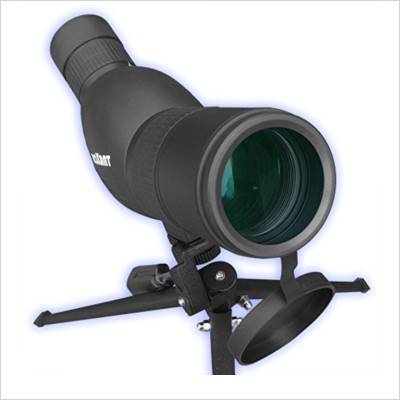Jump to Winner of Spotting Scope Top 10 Rankings!
Magnification Power and Zoom Lenses
Spotting scopes are designed to capture medium range focus; you will often find them with magnification power falling somewhere between 15x and 60x. You can change their magnification power either by using interchangeable fixed length eyepieces or with the help of single zoom eyepiece. When you start scanning the certain area with tactical scopes, it is good to start with the lowest magnification power and once you are able to locate a group of birds, you can switch to a higher power to lock your target.
Zoom lenses are also used to boost the magnification power with simple adjustments; they can help you to reach up to 20 to 60-times higher focus. These lenses assist hunters to work efficiently at low power to identify the location of the target and they can make a quick shift to higher for more details. However, with increase magnification range, the traditional zoom lenses cause narrower field of view, lesser light and may also cause more vibrations. But the great news is that latest zoom lenses are designed to ensure more clarity, sharpness and better detailing at high ranges.
Light Gathering Capability
Size of objective lens determines the light gathering capacity of a spotting scope. Different models may have a different value of light gathering ability but they generally vary between 50mm to 100mm. Note that larger objective lenses can provide you much brighter images but they will add up more weight to your luggage.
Eyepiece Placement
Another major consideration for choosing your birding scope is its eyepiece placement. Most of the bird watchers prefer to use eyepieces that are designed for straight through viewing experience. It helps them to locate objects with ease but few hunters may look for an angled piece that works at 45 degrees. This type of spotting scopes assists to maintain easy focus above the horizon and they work perfectly with the shorter tripods.
When you are organizing a hunting trip with friends having different height, these scopes will help you to make an easy adjustment for everyone. If you wear eyeglasses then while buying your scope, prefer to look for longer eye relief as it will help you to maintain the complete field of view for a long time without getting tired.
The most preferred range for eye relief is 12 to 15 mm as it suits most of the eyeglass wearers. Other than this, you have to look for glass quality of your scope. The best hunting scopes are generally made up of extra-low dispersion, high density or fluorite coated glasses.

